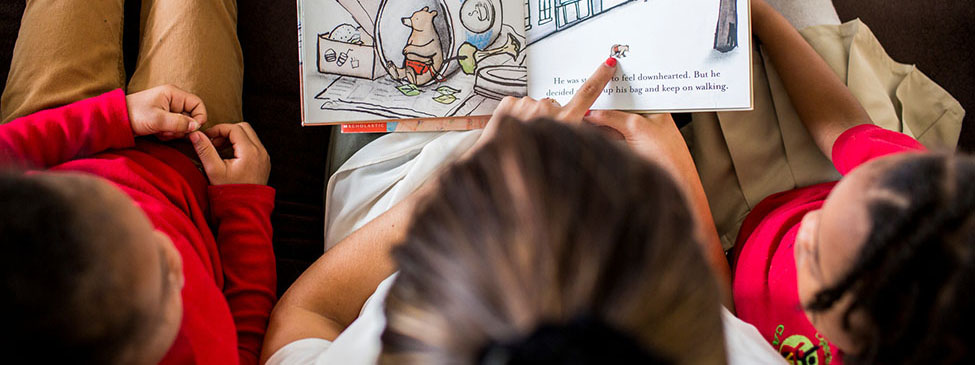For three weeks this past summer, while many other kids in Durham, North Carolina were watching TV or running through sprinklers, students who recently emigrated from Mexico, Somalia, Syria, countries in Central America and central Africa and elsewhere headed back to school.
Approximately 140 families of English Language Learners signed their children up for Durham Public Schools’ ESL Newcomer Academy, a lively program enabling kids who have been in the country less than two years to participate in project-based learning with the goal of increasing their English, math, and technology skills.
Milkana Tesfazsi, a rising seventh-grader, emigrated with her mother from Ethiopia last winter. She recently told a reporter from the Durham Herald-Sun that she hopes to put her love for science to good use one day.
“I like America and I don’t want to move from North Carolina,” she said. “I want to be something, I want to be a doctor.”
Durham Public Schools (DPS) serves over 4,500 English Language Learners, who together speak more than 90 different languages. The district’s not particularly unique in this regard. Nationwide, some 10 percent of all students are English Language Learners—and that number is rising every day. For many school systems, it’s a dramatic demographic shift.
It is also an opportunity. Students who can navigate different languages and cultures bring tremendous value to their classrooms and, down the road, their colleges, workplaces, and communities. And the ability to communicate in multiple languages is a skill that will only be in demand for more and more jobs in a global workforce.
And yet nationally, English Language Learners as a whole are underserved. Too few students attend classrooms in which language learning and rigorous content are effectively integrated. Often, English Language Learners are lumped in with students with a wide spectrum of special needs, so they miss out on support tailored to the unique challenges of learning new content while learning a new language.
And frequently, their teachers aren’t provided with the right level of training and support. Only 15 percent of teacher preparation programs have coursework on supporting English Language Learners. As a result, just 63 percent of English Language Learners graduate from high school, compared to 82 percent of students overall, and less than 2 percent of those who do graduate take the ACT or the SAT. In other words, too many English Language Learners are missing out on the opportunity to reach their full potential in school, and in life.
As the head of the English as a Second Language Services program in Durham, Sashi Rayasam wants to do better than that in her district and has high expectations for the students she serves. Under the district’s new strategic plan, staff are committed to seeing high growth from 80 percent of English Language Learners.
But students aren’t the only focus for DPS. Rayasam is also committed to family engagement, pointing out that it’s critical to provide parents with the support they need to ensure their children’s success. All families are crucial partners in their children’s learning, and family engagement in education is linked to improved school readiness, higher grades and test scores, better attendance, and the increased likelihood of high school graduation. And families of English Language Learners are particularly motivated to ensure that their children succeed in school. After all, many recent immigrants cite their desire to provide a better life for their children as their primary reason for coming to the United States.
A recent survey by Learning Heroes found that parents who identify as “Spanish-dominant” (the only subgroup of English Language Learner parents identified by the survey) expressed greater interest than other families in a wide range of resources, including homework support, activities to support math and English skills, explanations of expectations for their children’s learning, and tips for advocating for their children’s needs.
In addition to supporting family engagement at the school level, Durham Public Schools also has a suite of resources available to the families of English Language Learners. At Durham’s ESL Resource Center, families who speak languages other than English have access to trained interpreters who can provide special support with enrollment and other services. DPS also employs a number of full-time Spanish Community Liaisons, who offer translation support at district-wide events and provide workshops on topics ranging from literacy, math, and college access.
“We’re committed to serving all of our families here in Durham—those who have been residents for a long time, those who are new here, those who speak English as a second language, and those who are refugees,” said Chip Sudderth, Chief Communications Officer. “Every family has a role to play to help children in Durham learn, grow, and succeed.”
In a national atmosphere in which immigrants and refugees have increasingly been targeted for harassment and intimidation, DPS has issued multiple statements affirming the right that all children in the United States are entitled to equal access to education, regardless of national origin, citizenship, or immigration status (read the district’s statements here and here.) District leaders see this as a critical step to ensure that all families feel that their schools are welcoming places, regardless of citizenship status—something that’s becoming even more important given the administration’s recent announcements about phasing out DACA.
As our nation continues to become more diverse, it’s critical that schools and districts recognize the important role they play in helping recent immigrants become integrated into the fabric of American society. Too often, families of English Language Learners report heartbreaking stories of isolation and exclusion from parents, even as they actively seek to support their children’s learning.
Even in a district like Durham, there is still work to be done in this regard. As part of our Community Engagement Compass, we partnered with El Centro Hispano to host a roundtable conversation with the parents of English Language Learners. While some families reported strong relationships with their children’s teachers and principals, others shared stories of challenging language barriers, slow response times from principals and teachers, and subtle signs that their contributions as parents were not valued by school staff.
So what can schools and districts do to build stronger partnerships with families of English Language Learners? In Durham and elsewhere, it starts with the same principles that they’d use to engage all families: asking questions, creating pathways for ongoing conversations, making teachers and principals more accessible for working parents. But there are also specific steps that schools could and should take to make sure that non-English-speaking families are not left out.
For starters, schools can make the language or languages of their families visible and welcome. Translating school signage is a simple first step; staffing front offices with bilingual employees or volunteers and having trained interpreters available for parent-teacher meetings and family events is a longer-term investment. Schools can ask parents (in their native language) what kinds of resources they’d use for supporting their children’s learning at home. Individual teachers can figure out what kind of communication tools their students’ parents prefer—translatable text messages, for example, may feel more accessible than phone calls. And schools and districts can create strong programs—similar to Durham’s ESL Newcomer Academy or the ESL Resource Center—that provide English Language Learners and their families with extra support to ensure that students thrive.
Some of these steps are larger investments, while others are simple things schools can do right away. Regardless, it’s no longer an option to ignore the important role families of English Language Learners play in supporting student success or to assume that a one-size-fits-all approach to engagement will work for all families. Families of English Language Learners aren’t a rare exception, nor are they a “problem” to be solved. They’re a valuable part of school communities, and it’s time to treat them as such. The success of growing numbers of students depends on it.
Read more about great community engagement in our publication, “Walking Together: A Practical Guide for Strengthening Partnerships Between Schools, Families, and Communities.”





